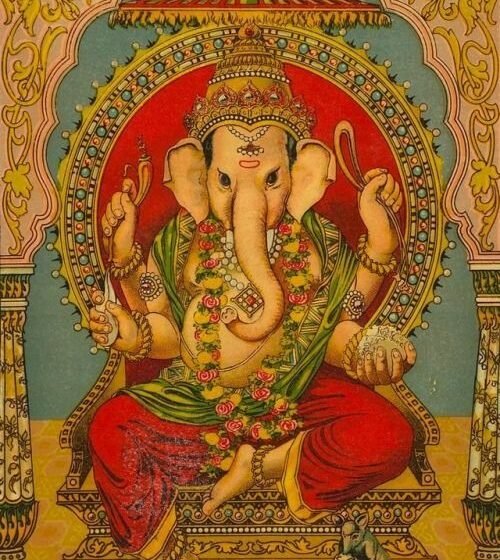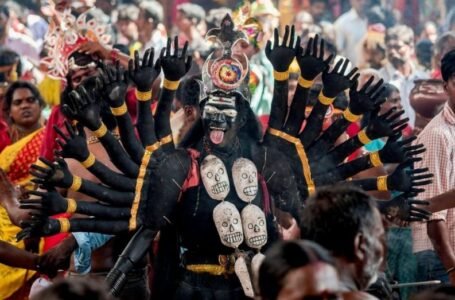The Mudgala Purana: A Unique Insight into the Life and Legends of Lord Ganesha

This purana is actually centred around the Hindu deity Ganesha. The Mudgala purana actually comes under the Upapuranas of Hindu religious literature. The Upapuranas are Hindu religious texts that are considered secondary Puranas after the Maha puranas. They are said to be eighteen in number similar to the Maha puranas. Ganesha is the lord of new beginnings, wisdom, prosperity, and obstacle removal. A lot of Hindus usually worship Ganesha first before their poojas.

The Mudgala purana is one of the two upapuranas related to Ganesha alongside Ganesha purana. While Ganesha purana shows us the story of 4 incarnations, in Mudgala purana we see 8 incarnations of Ganesha. The Ganpatyas hold this upapurana especially important and rely on it because they consider and worship Ganesha as their primary deity. A text like this would help one understand the customs, practices and traditions that are built around the worshiping of Lord Ganesha.
When it comes to ancient Indian texts it is complex to place a finger on when exactly they were composed and written. If we are to talk about upapuranas in general it is said that they were composed between the 6th and 10th centuries CE. Some scholars conclude that the Mudgala was the last of the philosophical texts that was centred with Ganesha while some say Mudgala purana was written before the ganesha purana. There is a lot of debate surrounding the exact dating of this text. 
Ganesha is known by different names in different households. While some refer to him as Vinayak, some call him Lambodara and some call him Ganpati Bappa. Hindus usually refer to different gods in different names. Ganesha is the son of God Shiva and Goddess Parvathi. The birth tale of Ganesha is a story very popularly known among Indians. This upapurana also talks about it.
One day while taking a bath goddess Parvati created a clay boy out of the dirt, she rubbed off her body. Ganesha was born when she infused life into this idol. When Shiva returned home, Ganesha stopped him without realizing who he was because his mother had told him to do so. Shiva in anger bereaved his head and on realization replaced it with that of an elephant. Hence the image of lord Ganesha is that of a human body with an elephant head. This purana consists of several other stories revolving around Ganesha.

THE THREE GUNAS
The mentions of gunas can be seen in the puranas and in the Mahabharata as well. These three guṇas are called sattva (purity, knowledge, and harmony), rajas (passion, activity, change), and tamas (ignorance, inertia, laziness). Since Lord Ganesha is the God of wisdom and also obstacle removal, these seem to highlight the gunas of sattva and rajas while tamas takes a back seat. As the God of new beginnings also he embodies activity and change. Sattva usually depicts preservation while rajas depicts creation.
GANESHA’S EIGHT FORMS
The Mudgala Purana talks about eight forms or eight incarnations of Lord Ganesha. These eight forms are called Ashtavinayaka. Each form is concerned with a particular region and has a unique story attached to it, worshipers go and visit these temples in a specific order and it is called the Ashtavinayaka pilgrimage. There are several stories in Hindu mythology that tell us about the coming to be of these eight incarnations of Ganesha.

Ganesha’s first incarnation was as Vakratunda meaning curved trunk. The mythology of this is related to the defeat of demon matsara. The second form is that of Ekdanta, the one tusked. There are several stories around this incarnation. One says it happened due to a fight with Parshuram, another says that Ganesha broke his own tooth to make a pen for Maharishi Ved Vyasa to write the Mahabharata. The third is Mahodara who defeated the demon Mohasura. The next avatar is Gajanana, the one with an elephant face. In this form, Gajanana conquered the demon Lobhasura due to his greed. In the fifth avatar, Ganesha took the form of Lambodara and appeared with a belly large enough to accommodate the anger of the demon Krodhasura. The other three incarnations were Vikata, Vighnaraja and Dhumravarna.
THE ASHTAVINAYAKA PILGRIMAGE
There are eight ancient Ganesha temples in Maharashtra that collectively form the Ashtavinayaka pilgrimage. The devotees set on this journey follow a specific order in visiting these temples. The Ashtavinayak pilgrimage holds a deep spiritual belief that it removes life’s obstacles and grants success.

The pilgrimage starts at the Moreshwar Temple situated in Morgaon, the next is the Siddhivinayak Temple in Siddhatek,this is the only Ashtavinayaka shrine where the deity has his trunk to the right, usually the trunk is towards the left. The next is Shri Ballaleshwar Temple. This temple is located in Pali and is named after Ballal who was a devotee of lord Ganesha. At fourth there is Shri Varad Vinayak temple located in Mhad village in Maharashtra. Chintamani temple in Theur is believed to give peace of mind and remove all restlessness and angst amongst his devotees. Shri Girijatmaj Ganapati is situated 90 kms away from Pune and happens to be the only Ashtavinayak temple which is situated on a hill. Vigneshwar Ganapati is the seventh Ganesh temple. This temple is located in Ojhar district of Pune. The last is the Maha Ganapati temple located in Ranjangaon, Pune.

LEGACY
The Ganapatyas view the Mudgala purana/ upapurana as their core and most important scripture. They follow the teachings of this purana and rely on it with full belief in their lord Ganesha. They know he is their sole problem-solver and protector. They follow the rituals and practices that the purana talks about. Being about the god of wisdom himself this purana spreads the importance of becoming more aware and practicing it well. It is said that the Mudgala purana holds importance to the devotees of Ganesha because it is one of the two upapuranas about their god. It is said to have influenced music and poetry along with art forms as well. Artists seem to draw their influences from the detailed mythological stories given in it too.

CONCLUSION
The stories that have been passed down from our elders become more interesting when you read them through a sorted after piece of religious Hindu literature. It not only impacts your belief system it also intrigues you to know more. The Mudgala purana proves to be important to anyone that reads it because it explains in such detail about things like the Ashtavinayaka, Ganesha’s birth, the story of Ganesha cursing the moon which lead to the moon’s phases, his encounter with kubera etc. not only does one learn about the religious practices but it also teaches moral values like wisdom, truth, and humility.


